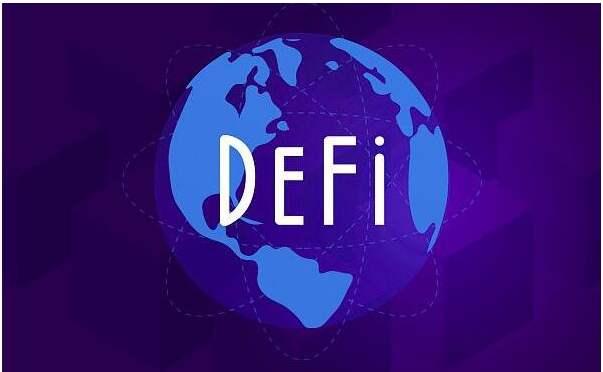ZKX Shutdown Controversy: $7.6 Million Financing Hides "Word Games," Actual Circulation of Token TGE Exceeds Official Documentation
Author: Xiyou, ChainCatcher
Editor: Marco, ChainCatcher
On July 31, Eduard, the founder of the leading StarkNet derivatives platform ZKX, announced the decision to shut down the platform due to the inability to find a viable economic path, stating that all user funds would be refunded to their trading accounts.
According to CoinGecko data, since the announcement of the closure, the ZKX token has dropped by over 50%, currently priced at $0.01.
However, the news of ZKX's shutdown has been continuously fermenting in the crypto community. The project had just issued the ZKX token a few weeks ago and announced a significant $7.5 million funding round supported by top institutions such as GCR, Amber Group, and Crypto.com, making the shutdown decision quite unexpected.
Investor @Ye Su expressed on social media that as an investor, he did not receive any prior notice before ZKX's closure.
He added that the team claimed they ran out of money and refused to provide any financial or expenditure details, nor were they willing to communicate with us investors. Most projects consider how to pivot and actively communicate during difficult times; in contrast, Edward took money from early supporters without any communication, showing a lack of ethical standards and losing the right to start a business in the industry in the future.
Inability to Cover Market Maker and Server Costs, ZKX Chooses to Shut Down the Platform
Why did ZKX decide to shut down? In the announcement released by founder Eduard, it stated that currently, user participation on the ZKX platform is extremely low, with only a handful of users participating to earn STRK and ZKX incentives. Trading volume has significantly declined, and daily revenue can no longer cover the cloud server expenses necessary to maintain normal website operations, only able to pay a small portion of it, leading to an inability to pay salaries and other operational costs.
He emphasized that the monthly fees and rebates required to be paid to market makers have greatly exceeded their revenue, and starting in August, they are being asked to pay even higher fees. However, the ZKX token has not met expectations since its launch, and as major holders cash out, the price has continued to decline. At the current value of the ZKX token, it can no longer support the continued operation of the protocol.
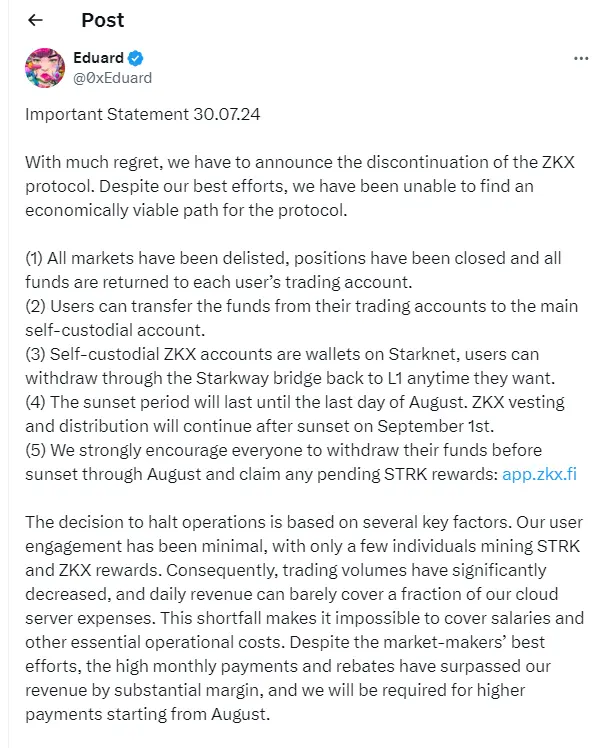
Eduard's announcement of ZKX's shutdown caused an uproar in the crypto community, with many expressing confusion, as just a few weeks prior, ZKX had completed its token TGE and announced a new funding round of $7.6 million.
On June 19, ZKX officially announced the issuance of the ZKX token and simultaneously listed it on exchanges such as Gate.io, Bitget, and KuCoin. On the same day, ZKX announced that it had secured a new round of strategic financing totaling $7.6 million from major investors such as Flowdesk, GCR, and DeWhales, indicating strong backing from investment institutions.
In less than 40 days, the ZKX platform directly ceased operations, leaving users in the crypto community very puzzled: Why is ZKX out of money when the token was just launched a few weeks ago? How did it spend the $7.6 million in funding in just 40 days?
$7.6 Million Financing Allegedly Deceptive, Real Circulation of TGE Tokens Exceeds Official Documentation
The $7.6 million financing announced on the day of the token TGE (June 19) is shrouded in "wordplay."
In response to @ZachXBT's inquiry about the whereabouts of the $7.6 million financing, ZKX founder Eduard explained that the $7.6 million financing is actually the cumulative fundraising amount from 2021 to 2024, not a recent occurrence.
The funds have been used for nearly four years of team operations, supporting a 30-person team to build a dedicated blockchain L3 for expanding perps, with expenses including multiple token audits, token TGE listing costs, AWS fees, and promotional activities related to development.
He stated that the cloud server costs for running the L3 network are extremely high, and in hindsight, choosing to run a fully on-chain smart contract protocol instead of L3 and other strategic decisions might have been more financially prudent.
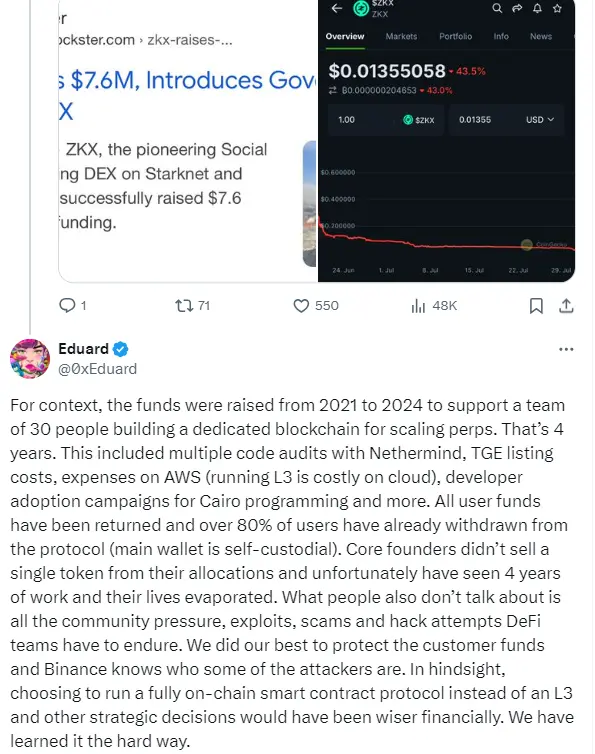
At this point, users realized that the $7.6 million financing announced on the day of the token listing was playing a word game, misleading users into thinking that this new round of financing amounted to $7.6 million. The reality is that this $7.6 million financing actually includes $4.5 million from the seed round financing in 2022, with the real financing amount being only $3.1 million, and it may not have even occurred in June; it was merely to align with the ZKX token TGE.
On-chain detective @ZachXBT stated that Eduard's actions were misleading users into purchasing tokens during the TGE.
On August 1, Jin Kang, a partner at Perlone Capital, tweeted directly accusing ZKX of being a scam.
Jin Kang pointed out three main issues with ZKX: the team closed the project due to lack of funds just six weeks after the TGE, suddenly changed the token unlocking plan during the TGE, and the actual circulating tokens exceeded the official documentation, leading to a price crash.
He stated, "If this isn't a scam, then what is?"
He noted in his tweet that the ZKX token dropped over 50% within 24 hours after the TGE, and the ZKX team blamed the market makers, claiming they couldn't stabilize the price at $0.7, with one market maker selling tokens during the TGE.
The reality is that before the TGE, over 10 million ZKX tokens were already in circulation, exceeding the official documentation; and in the first nine hours after the TGE, the ZKX team prevented the transfer of ZKX from Starknet, meaning that trades during this period were either from the team or market makers; and at the last moment of the TGE, they changed the token economics, increasing the market maker's percentage from 4% to 8.5%.
He called on ZKX token market makers, StarkNet, and the exchanges to reveal the truth and provide the community with fairness.
According to Coingecko data, since the ZKX TGE began on June 19, the token price has dropped from a high of $0.62 to $0.01 as of August 1, a decrease of over 98%.
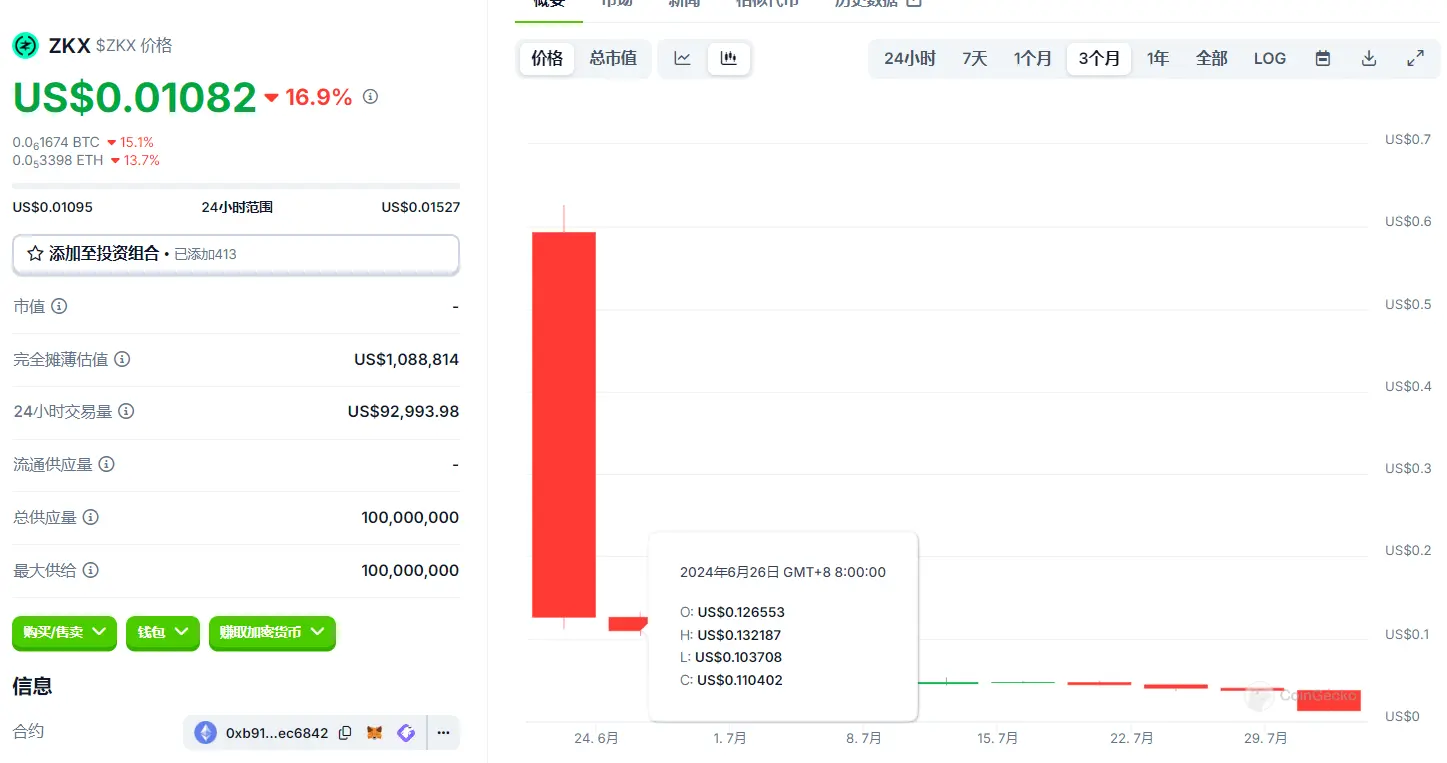
ZKX community user Nono told ChainCatcher that the crisis of ZKX's collapse had actually been surfacing in the community for some time, with the Telegram community being unmanaged since the end of June, and there were no responses from administrators to listing invitations from exchanges like BingX and BitMart or to Binance Live AMA invitations.
ZKX Shutdown Controversy Sparks Attention on the Activity Level of Underlying Network StarkNet
The closure of ZKX has raised questions about the sustainability of DeFi projects and how to maintain user engagement and generate stable revenue in a rapidly developing and competitive market. However, as a leading derivatives representative on the StarkNet chain, ZKX's shutdown controversy has also plunged it into a public relations crisis, being criticized for its low ecological activity.
Some community users believe that ZKX's final outcome of shutting down the platform was due to being built on StarkNet, as the underlying language Cairo developed by StarkNet is too complex, leading to higher development costs such as developer salaries and code audit costs. If it were built on another chain, the outcome might have been different.
Developer Tom (pseudonym) explained to ChainCatcher that the key issues leading to ZKX's shutdown are low user participation and insufficient revenue, which essentially reflects the low user activity on the StarkNet network. Even with support from top capital, if the underlying network struggles to maintain normal operations afterward, it will be challenging.
Currently, compared to Layer 2 networks like Arbitrum, zkSync, Optimism, Base, and Blast, StarkNet's activity level is relatively low, with only 10,000 daily active addresses, a daily trading volume of only $7.5 million on DEX, and daily captured trading fees of only $1,000, ranking at the bottom among Layer 2 networks.
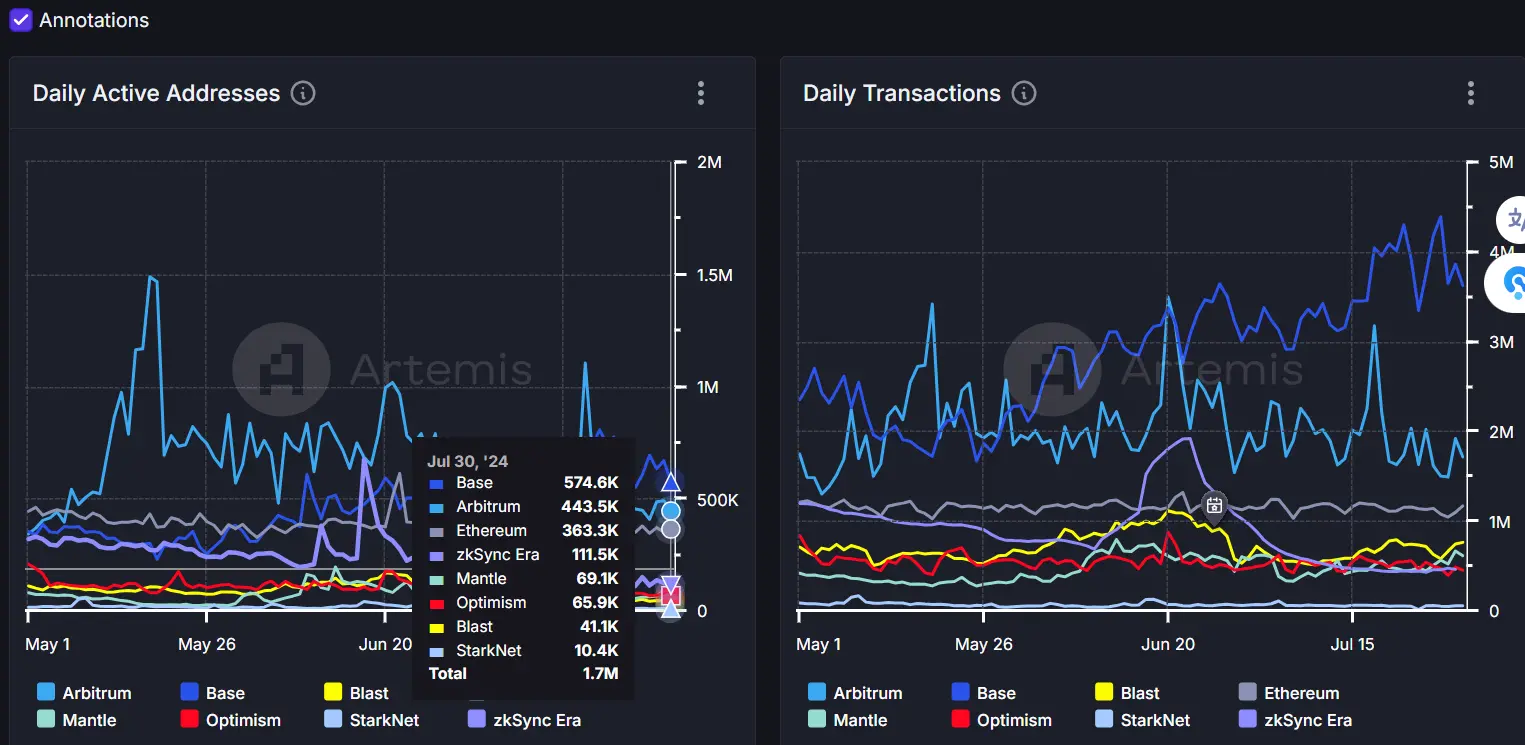
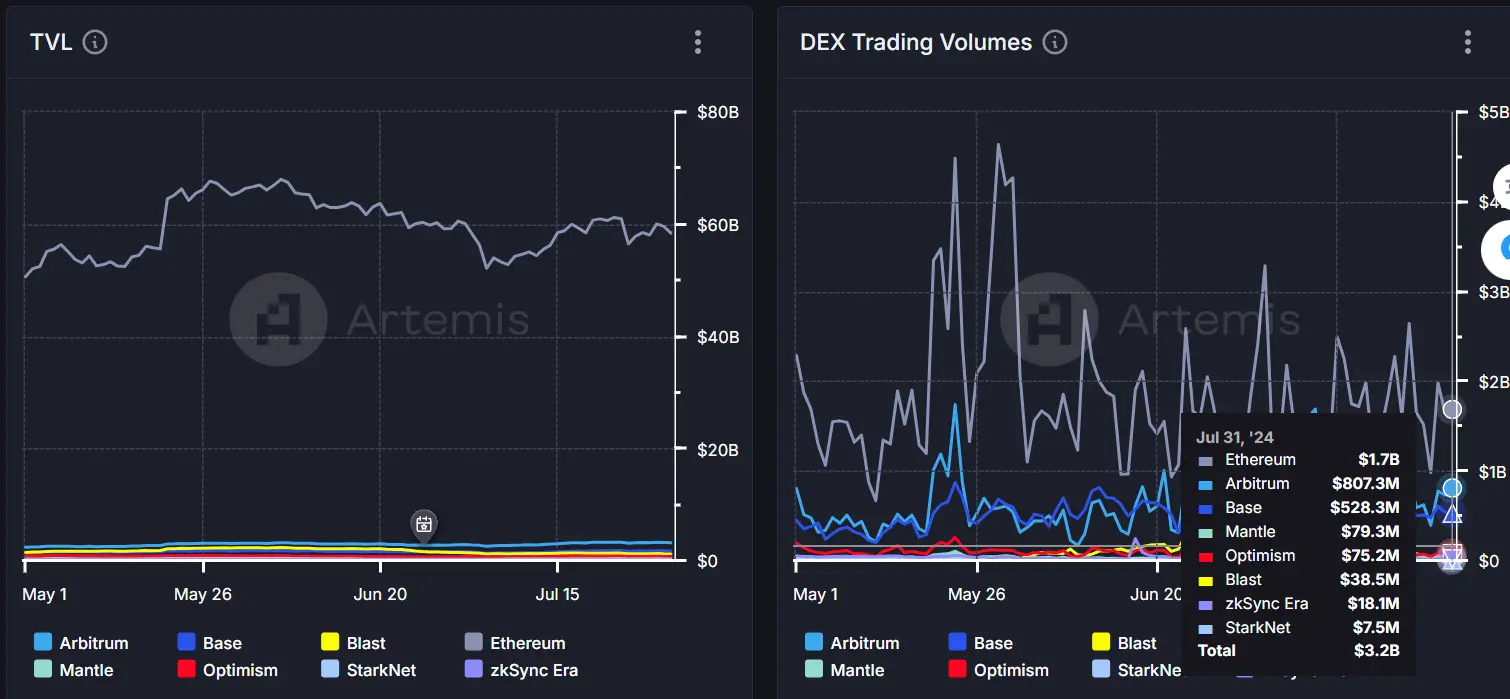
On-chain player Tutu stated that the decline in user participation on Starknet after the airdrop is inevitable, which is a commonality among all Layer 2 networks. There are no blockbuster or unique DApps on the Starknet chain, and new users find it difficult to enter.
Take the user entry wallet as an example; currently, creating a wallet on Starknet requires excessive time and effort. The network still requires the use of wallets like Braavos and Argent, which provide a particularly poor user experience for users who are already accustomed to switching between different EVM chains, preventing some users from entering the ecosystem.
Now, users no longer focus on whether the technology behind the underlying network is complex; they care more about whether the user experience is smooth and simple. Starknet still has a long way to go in this regard.





